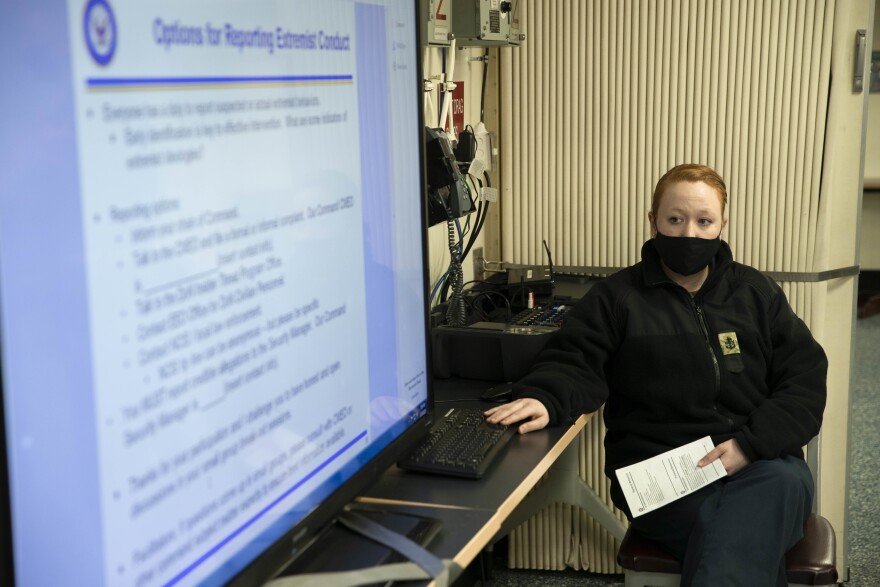Marine Corps 1st Lt. Madeline Hoffman remembers watching the January 6 events at the Capitol on TV.
"That was tough as a service member to see," she said. "I take that oath very seriously, and I want to make sure our Marines understand that type of activity is directly in contrast to that oath."
Hoffman leads an infantry logistics unit at Marine Corps Air Ground Combat Center Twentynine Palms in California. Like many other military leaders, she was tasked with conducting a stand down for her unit - a meeting to discuss extremism in the armed forces.
Some 15% of those charged after the storming of the Capitol had some kind of military affiliation in their life.
Secretary of Defense Lloyd Austin mandated the stand downs, gave the military branches 60 days to conduct them, and outlined certain basics that had to covered. For instance, troops had to review their oaths to "support and defend the Constitution."
Each service branch also issued additional guidance for how their leaders should run the stand downs. Adm. John Aquilino, the commander of the U.S. Pacific Fleet, came to San Diego soon after the order was signed and made the rounds to several ships and crews who were in port.
The Marines generally pushed the assignment down to small unit commanders. Hoffman said she had about a week to prepare to conduct the training. It was her first experience with the topic.
"Specifically, extremism hasn't been a major training point," she said.
Experts who follow the military's checkered history with tracking extremism aren't surprised that leaders on the ground haven't been given the tools to look for it in the ranks.

"There is a lot that needs to be done to fix this problem in the military," said Heidi Beirich of the Global Project Against Hate and Extremism. "They need to make sure that anyone who is in a position to report this stuff is doing so. That that information is captured. Their own investigators haven't seemed clear in hearings in 2020 on what the rules are."
Beirich is concerned that if the stand down isn't backed up by tangible changes, it will send the wrong message to rank and file members of the military.
"I think of the stand down as being a good wake up call," she said. "And hopefully there will be serious conversations in every branch at every level about these issues, but that can only be perceived as one tiny piece of an overhaul and a massive change in the way the military is managed."
She says there's a lot military leaders still need to do to combat extremism. They still don't have a database of extremist tattoos and symbols. They are still working on a policy to monitor social media for extremist activity. The head of the Naval Criminal Investigative Service testified before Congress in February 2020 that all of the Navy's active cases of domestic terrorism had been forwarded from the FBI.
After the Stand Down, 1st Lt. Hoffman said the session went longer than she expected, mostly because of the number of questions. One thing that came up a lot is the policy that allows Marines to belong to extremist groups as long as they aren't "active" members.
"You walk a very fine line moving from active to passive membership," she said. "Something as simple as sharing an article from an extremist organization on your Facebook page is grounds to move from passive to active membership."
Two Marines under Hoffman's command said the military's apolitical reputation has been under siege for a while. The stand downs were a chance to right the ship, said Lance Cpl. Allen Huff.
"If you can receive this knowledge about this class and be told it's a relevant issue and still somehow look away from it, then that's kind of a personal issue," Huff said.
Marine Cpl. David Dorsey said he found the stand down informative. He said he hasn't encountered people who are in extremist groups. But as an African American, he has seen bigotry and racial stereotypes among fellow Marines.
"It's not going to be a quick turn around," Dorsey said. "Usually nothing ever is when you're trying to change a wide range of people. Do we work on trying to fix it? Yes, but it's a slow going thing. It's not something that is going to change immediately."
This story was produced by the American Homefront Project, a public media collaboration that reports on American military life and veterans. Funding comes from the Corporation for Public Broadcasting.





